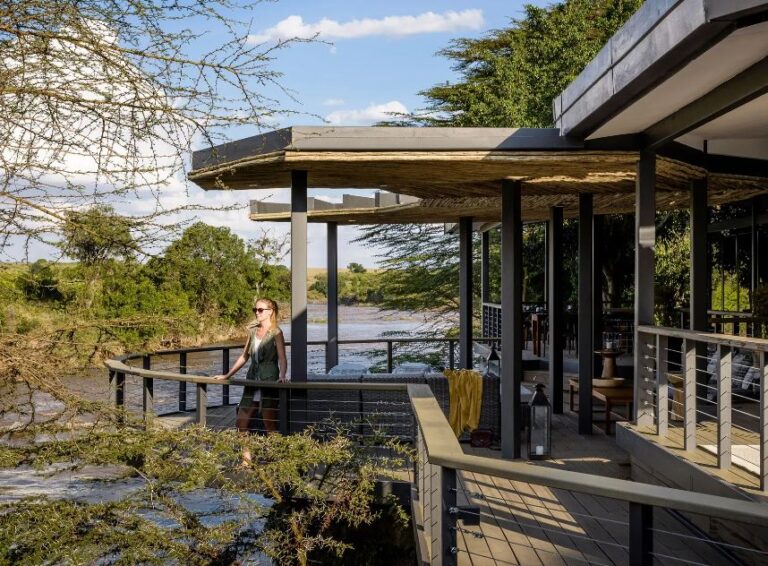Africa, the world’s second-largest continent, is incredibly diverse in terms of its geography, climate, and ecosystems. It’s covered by a wide array of natural features and environments:
Major Geographical Features and Biomes:
- Deserts:
- Sahara Desert: Dominates much of North Africa, it’s the world’s largest hot desert, characterized by vast stretches of sand dunes, rock, and gravel.
- Kalahari Desert: Located in Southern Africa, this is a semi-arid to arid sandy savanna.
- Namib Desert: A coastal desert in southwestern Africa, known for its towering sand dunes.
- Grasslands (Savanna and Sahel):
- Sahel: A semi-arid strip of dry grassland south of the Sahara, gradually transitioning into more humid zones.
- Savanna: Extensive tropical grasslands dotted with trees, covering much of East, Central, and Southern Africa. These are home to a wide range of wildlife like giraffes, zebras, and elephants.
- Tropical Rainforests:
- Congo Basin: A vast area in Central Africa covered by dense tropical rainforest, through which the Congo River flows. This region has a hot and wet climate.
- Mountains and Highlands:
- Atlas Mountains: In northwestern Africa, separating the Mediterranean coast from the Sahara.
- Ethiopian Highlands: A rugged mountain range in East Africa, often referred to as the “Roof of Africa.”
- Mount Kilimanjaro: Africa’s highest peak, located in Tanzania, which despite being near the equator, has glaciers at its summit (though these are shrinking due to climate change).
- Great Rift Valley: A massive geological feature extending through East Africa, characterized by a series of valleys, volcanoes, and large lakes (like Lake Tanganyika and Lake Victoria).
- Drakensberg Mountains: A mountain range in Southern Africa.
- Rivers and Lakes:
- Nile River: The longest river in the world, flowing north through northeastern Africa, forming a fertile delta before emptying into the Mediterranean Sea.
- Congo River: A major river flowing through the Central African rainforest.
- Niger River: A large river in West Africa.
- Zambezi River: Flows through Southern Africa.
- Lake Victoria: The largest lake in Africa and the second-largest freshwater lake in the world.
- Lake Tanganyika: A very deep and long freshwater lake in the Great Rift Valley.
- Coastal Areas: Africa is bordered by the Mediterranean Sea to the north, the Atlantic Ocean to the west, and the Indian Ocean to the southeast. Coastal plains are generally narrow, often fringed by mangrove swamps.
- Plateaus: Much of Africa is characterized by vast, elevated plateaus, often with varied topography.
Climate Zones:
Africa’s position, straddling the equator and the Tropics of Cancer and Capricorn, gives it a wide range of climates, including:
- Hot Desert Climate: Found in the Sahara, Kalahari, and Namib deserts, characterized by extreme aridity and high temperatures.
- Semi-arid Climate: Fringing the desert regions, like the Sahel and parts of Southern Africa, with slightly more rainfall.
- Tropical Wet-and-Dry (Savanna) Climate: Characterized by distinct wet and dry seasons, supporting the savanna grasslands.
- Equatorial (Tropical Wet) Climate: Found in the rainforest regions, with high temperatures and consistent rainfall throughout the year.
- Mediterranean Climate: Found in the northernmost and southernmost fringes of the continent, with mild, wet winters and hot, dry summers.
- Humid Subtropical Climate: Found in some coastal areas.
- Subtropical Highland Climate: In higher elevation areas like the Ethiopian Highlands.
In summary, Africa is a continent of immense geographical and climatic diversity, ranging from vast deserts to lush rainforests, towering mountains to expansive grasslands, and traversed by some of the world’s most significant rivers and lakes.
Africa
Africa has a total of 54 countries, the most of any continent. The most populous of these countries is Nigeria, which has more than 211 million people. The largest country by land area in Africa is Algeria, which spans over 919,595 mi² (2,381,741 km²). Africa also has one of the world’s best-known transcontinental countries, Egypt, whose northeastern corner extends into Asia. Below are the 54 countries in Africa in alphabetical order:
Countries of Africa:
- Algeria
- Angola
- Benin
- Botswana
- Burkina Faso
- Burundi
- Cabo Verde/Cape Verde
- Cameroon
- Central African Republic
- Chad
- Comoros
- Congo/Republic of the Congo
- Democratic Republic of the Congo
- Djibouti
- Egypt (transcontinental – generally considered African)
- Equatorial Guinea
- Eritrea
- Eswatini (formerly Swaziland)
- Ethiopia
- Gabon
- Gambia, The
- Ghana
- Guinea
- Guinea-Bissau
- Ivory Coast/Republic of Côte d’Ivoire
- Kenya
- Lesotho
- Liberia
- Libya
- Madagascar
- Malawi
- Mali
- Mauritania
- Mauritius
- Morocco
- Mozambique
- Namibia
- Niger
- Nigeria
- Rwanda
- Sao Tome and Principe
- Senegal
- Seychelles
- Sierra Leone
- Somalia
- South Africa
- South Sudan
- Sudan
- Tanzania
- Togo
- Tunisia
- Uganda
- Zambia
- Zimbabwe
